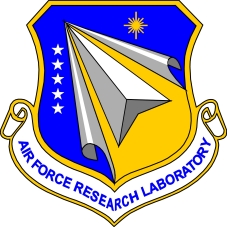: Added: Nov 16, 2012 12:50 pm
FEDERAL AGENCY NAME: Department of the Air Force, Air Force Materiel
Command, AFRL - Rome Research Site, AFRL/Information Directorate, 26
Electronic Parkway, Rome, NY, 13441-4514
Modified: Mar 27, 2015 9:37 am
The purpose of this modification is to republish the original
announcement, incorporating all previous modifications, pursuant to FAR
35.016(c).
TITLE: Airborne Connectivity and Dissemination
Research efforts under this program are expected to result in functional capabilities, concepts, theory, and applications addressing Air Force airborne network connectivity problems. The effectiveness of the developed technologies for potential operational use will be assessed through testing and evaluation activities. Technologies that can be transitioned for operational use are of high interest. Offerors are encouraged to describe the pre-conditions that are necessary for the proposed techniques to work effectively.
:::
Work is encouraged in, but not limited to, these focus areas:
1. Airborne Network Architecture
- Develop network architectures that support self-organizing, self- healing autonomous machine-to- machine data routing and dissemination.
- Develop self-aware/sentient cross-Open Systems Interconnection (OSI) layer network communications paradigms that support cooperative learning and reconfiguration-on-the-fly of mobile networks, by sensing and adapting to operational environment and mission requirements.
- Demonstrate cooperative wireless network communications that allow nodes in a wireless network to share resources and to cooperatively transmit, providing reliable, robust connectivity via multipath routing.
2. Information Transport Performance Management
- Develop the communications management capabilities to support the management of Intelligence, Surveillance, and Reconnaissance (ISR) related network and information system and communications resources.
- Develop information management algorithms capable of dynamically requesting data from multiple ISR sensors in order to enhance current capabilities for detecting, locating, identifying, and tracking ground moving targets.
- Develop the mechanisms to enable mission-based priority schemes and assured information delivery techniques supporting the exchange of ISR traffic, as well as other network traffic. Develop metrics such as Kill Chain Reduction, Bandwidth Efficiency, or Network Availability to gauge performance and effects.
3. Integration and Interoperability with the Global Information Grid (GIG)
- Integrate new communications resources available on the ISR platform(s), to enable increased communications capability.
- Study potential ISR collection planning and envisioned dynamic tasking techniques being developed for current and future Air Operations Centers (AOCs). Develop the information management algorithms to ensure they will operate within the constraints of these envisioned collection management techniques.
- In conjunction with the Government, work with the operational community to address Concepts of Operation (CONOPS) issues associated with ISR platform interoperability.
- Conduct airborne flight experiments utilizing multiple ISR assets aimed at demonstrating capabilities for increasing multi-platform interoperability and tracking performance.
4. Advanced Tactical Data Links (ATDL)
Tactical Data Links (TDL) are used in both peace time and combat environments to exchange information such as fixed formatted messages, data, radar tracks, target information, platform status, imagery, free text messaging and command assignments. TDLs provide interoperability, local and global connectivity, and situational awareness to the user when operating under rapidly changing operational conditions. TDLs increase mission effectiveness, providing enhanced situational awareness, positive combat identification of aircraft in the network, correlation of on- and off-board sensor data, and digital machine to machine target and threat information sharing, enabling time critical targeting and other mission assignment tasking. In combat TDLs enable engagement of high-value, time-critical targets in anti-access/area-denial environments. TDLs are used by all Service Theater Command and Control (C2) elements, weapons platforms, and sensors. TDLs include, but are not limited to: Link 16, Link 11, Situational Awareness Data Link (SADL), Variable Message Format (VMF), Intra-Flight Data Link (IFDL), and other Advanced Tactical Data Link technologies, such as Tactical Targeting Network Technology (TTNT), and Multifunction Advanced Data Link (MADL).- Conduct experiments and demonstrations providing validation of critical capabilities and enhancements to the Aerial Layer Network.
- Conduct experiments demonstrating interoperability among Air Force fighter platforms. Provide validation to ensure the Air Force fighter fleet maintains standardization, to develop interoperable data link exchanges.
- Conduct RF in-the-loop experiments to demonstrate ATDL validation and model authentication supporting Global Strike (GS), Global Persistent Attack (GPA), Offensive and Defensive Counterair (OCA and DCA), Suppression of Enemy Air Defenses (SEAD), and Destruction of Enemy Air Defenses (DEAD) missions.
- Demonstrate ATDLs on the fighter fleet to expand Line of Sight (LOS) and Beyond Line of Sight (BLOS) data link connectivity.
- Model future ATDL concepts for the next-generation conceptual fighter fleet to demonstrate scenario-based mission impact.
Background Related Links
- TTNT White Paper.pdf
- spendergast: AFRL RFI for Next-generation Aerial Directional Data Links and Networking (NADDLN)
- Delay tolerant mobility aware routing/mobility dissemination protocol for the airborne network
- Enabling information management systems in tactical network environments | Marco Carvalho


No comments:
Post a Comment